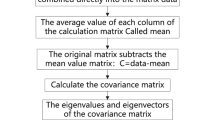Abstract
This paper describes a pedestrian detection system that integrates image intensity information with motion information. We use a detection style algorithm that scans a detector over two consecutive frames of a video sequence. The detector is trained (using AdaBoost) to take advantage of both motion and appearance information to detect a walking person. Past approaches have built detectors based on motion information or detectors based on appearance information, but ours is the first to combine both sources of information in a single detector. The implementation described runs at about 4 frames/second, detects pedestrians at very small scales (as small as 20 × 15 pixels), and has a very low false positive rate.
Our approach builds on the detection work of Viola and Jones. Novel contributions of this paper include: (i) development of a representation of image motion which is extremely efficient, and (ii) implementation of a state of the art pedestrian detection system which operates on low resolution images under difficult conditions (such as rain and snow).
Similar content being viewed by others
References
Avidan, S. 2001. Support vector tracking. In IEEE Conference on Computer Vision and Pattern Recognition.
Crow, F. 1984. Summed-area tables for texture mapping. In Proceedings of SIGGRAPH, Vol. 18, No. 3, pp. 207–212.
Cutler, R. and Davis, L. 2000. Robust real-time periodic motion detection: Analysis and applications. In IEEE Patt. Anal. Mach. Intell., Vol. 22, pp. 781–796.
Philomin, V. and Gavrila, D. 1999. Real-time object detection for “smart vehicles.” In IEEE International Conference on Computer Vision, pp. 87–93.
Freund, Yoav and Schapire, Robert E. 1995. A decision-theoretic generalization of on-line learning and an application to boosting. In Computational Learning Theory: Eurocolt’ 95. Springer-Verlag, pp. 23–37.
Hoffman, D.D. and Flinchbaugh, B.E. 1982. The interpretation of biological motion. Biological Cybernetics, 195–204.
Lee, L. Gait dynamics for recognition and classification. Mit ai lab memo aim-2001-019, MIT, 2001.
Liu, F. and Picard, R. 1998. Finding periodicity in space and time. In IEEE International Conference on Computer Vision, pp. 376–383.
Papageorgiou, C., Oren, M., and Poggio, T. 1998. A general frame-work for object detection. In International Conference on Computer Vision.
Polana, R. and Nelson, R. 1994. Detecting activities. Journal of Visual Communication and Image Representation.
Rowley, H., Baluja, S., and Kanade, T. 1998. Neural network-based face detection. In IEEE Patt. Anal. Mach. Intell., Vol. 20, pp. 22–38.
Schapire, R. and Singer, Y. 1999. Improving boosting algorithms using confidence-rated predictions.
Schneiderman, H. and Kanade, T. 2000. A statistical method for 3D object detection applied to faces and cars. In International Conference on Computer Vision.
Viola, P. and Jones, M. 2001. Rapid object detection using a boosted cascade of simple features. In IEEE Conference on Computer Vision and Pattern Recognition.
Author information
Authors and Affiliations
Corresponding author
Rights and permissions
About this article
Cite this article
Viola, P., Jones, M.J. & Snow, D. Detecting Pedestrians Using Patterns of Motion and Appearance. Int J Comput Vision 63, 153–161 (2005). https://doi.org/10.1007/s11263-005-6644-8
Received:
Accepted:
Published:
Issue Date:
DOI: https://doi.org/10.1007/s11263-005-6644-8




